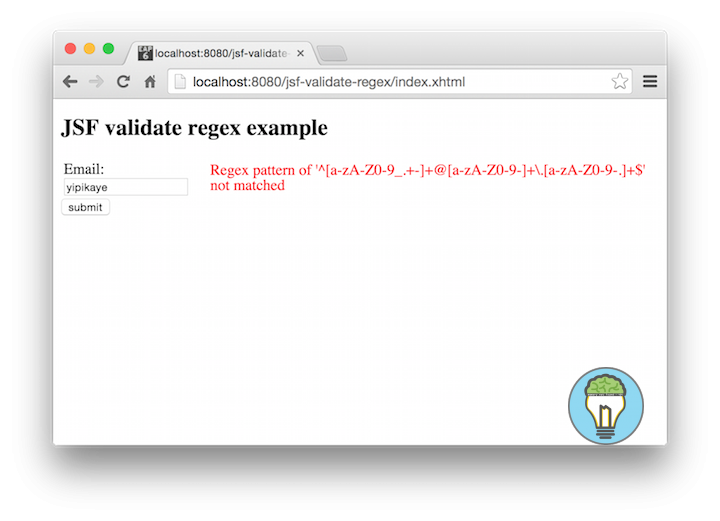

#REGEX VALIDATOR WINDOWS#
To try out the code, create a new Windows Forms project, and place a text box and an error provider on Form1. Note that to clear the provider, we set it with an empty string. The rest of the method sets the error provider if the match failed, or clears it if the match succeeded. The regex pattern matches any integer value, with empty strings allowed. The first line of the method creates a new regular expression, using the Regex class from the namespace.
#REGEX VALIDATOR CODE#
An event handler for the Validating event typically looks something like this:Ĭopy Code private void textBox1_Validating( object sender, CancelEventArgs e)ĮrrorProvider1.SetError(textBox1, String.Empty) Windows provides a Validating event that can be used to provide completion validation for most controls.

The rule on validation is the same as the rule on voting in my home town of Chicago: “Validate early, and validate often.” The Validating Event Nothing is more annoying to a user than a dialog box with a laundry list of errors, and a form with as many red marks as a badly-written school paper is not far behind. Errors should be trapped sooner, as close to when they are entered as possible. I recommend against relying on submission validation in a Windows Forms application. Key-press validation: We can validate a field as each character is entered.Completion validation: We can validate each field as it is completed.Submission validation: We can validate an entire form at one time, when it is submitted.There are three ways to validate user input: But first, let’s give some thought to the mechanics of validating user input. If we entered a digit (or digits) in the Test box, it would be green, like the Regex box. If it was invalid, the box would be red (okay, pink) like the Test box.Īnd speaking of the Test box, it’s red because its contents don’t match the pattern in the Regex box. The Regex box is green because the regex is a valid regular expression. The one shown here matches a string with an unsigned integer value, with an empty field allowed. The Regex text box contains a regular expression (a ‘regex’). In fact, it took longer to create the icon than it took to code the app! It has a single window: Regex Tester is so simple as to be trivial.
#REGEX VALIDATOR INSTALL#
I have also included an MSI file to install the binary, for those who do not want to compile the application themselves. The project that accompanies this article contains a little application called Regex Tester. By the time you are done, you will be able to write simple validators, and you will know enough about regular expressions to dig into it further without slitting your wrists. This stuff ought to be simple! Well, that’s what we are going to do in this article-make regular expressions simple.

For another, the open-source regular expression tools available on the web are incredibly complicated. Well, for one thing, just about every article and book out there is geared towards using regular expressions in text searches, rather than input validation. An overwhelming sense of despair hit me faster than you can say “I really, really hate this stuff!” And then I began to ask myself “Why?” I decided that I’d better add an alarm bell to wake up the user when all that was done! Thinking that there had to be a better way, I dug out my books on regular expressions and started wading through them again. If all that succeeds, then the list validates.” Assuming it succeeds, I can walk through the list, and call Int32.TryParse() on each element. “Lemme see-I can try to split the string, and use a catch if it fails. My breaking point came this past week, as I wrote yet another complicated method to validate a comma-delimited list of integers. In that time, I have learned two foreign languages, because that was easier than learning regular expressions.īut it has all come to naught, I’m afraid.NET has great support for regular expressions, and it’s hard to do input validation without them. Occasionally, I’d break down and read an article on the subject, or buy yet another regular expressions book. I have spent the last ten years doing so deliberately, and with great effort. I have spent all of my life avoiding regular expressions.


 0 kommentar(er)
0 kommentar(er)
